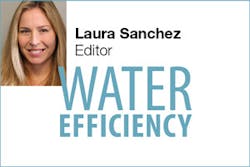Mortar shapes the architecture of the modern world. It connects our roads, guides our waterways, and structures our walls. Moisture, however, can damage it by causing cracking and promoting mold growth. A team of scientists at the Technical University of Munich has developed a novel nanotechnology to keep water out of mortar.
Mortar is the sand-based glue that joins masonry building blocks such as stones, bricks, and concrete together. It becomes hard when it cures, resulting in a firm structure.
With his team of researchers, Oliver Lieleg, a professor of biomechanics at the Institute of Medical Engineering (IMETUM) and the Department of Mechanical Engineering at the Technical University of Munich has recently engineered a way to protect mortar from moisture using biofilm, a slimy substance produced by bacteria.
In Advanced Materials, Lieleg and his colleagues describe how to make a moisture-resistant hybrid mortar. The key ingredient, they explain, is a biofilm produced by the bacterium Bacillus subtilis. The team grew this bacterial film in the lab and added it to the mortar powder.
“Bacillus subtilis normally lives in soil and is a very common microorganism,” Lieleg told Science Daily. “For our experiments, we used a simple laboratory strain that grows rapidly, forms plenty of biomass, and is completely harmless.”
The biofilm produces tiny spike-like nanostructures in a uniform pattern across the surface of the mortar. These crystalline points, visible through an electron microscope, interfere with a water droplet’s contact with the surface and create a repellent effect.
Untreated mortar produces similar nano-scale spikes but they tend to be too unevenly dispersed to effectively repel water. Lieleg and his team believe that adding biofilm to the mixture promotes uniform crystal growth. They are exploring ways to make other materials water-resistant as well, and are excited about the potential of this technology.
Perhaps in the future, biofilms will support water containment and conveyance in a variety of ways, not only by shedding water and protecting structures from damage, but by improving distribution pipelines, storage vessels, and linings. What applications would you like to see?
